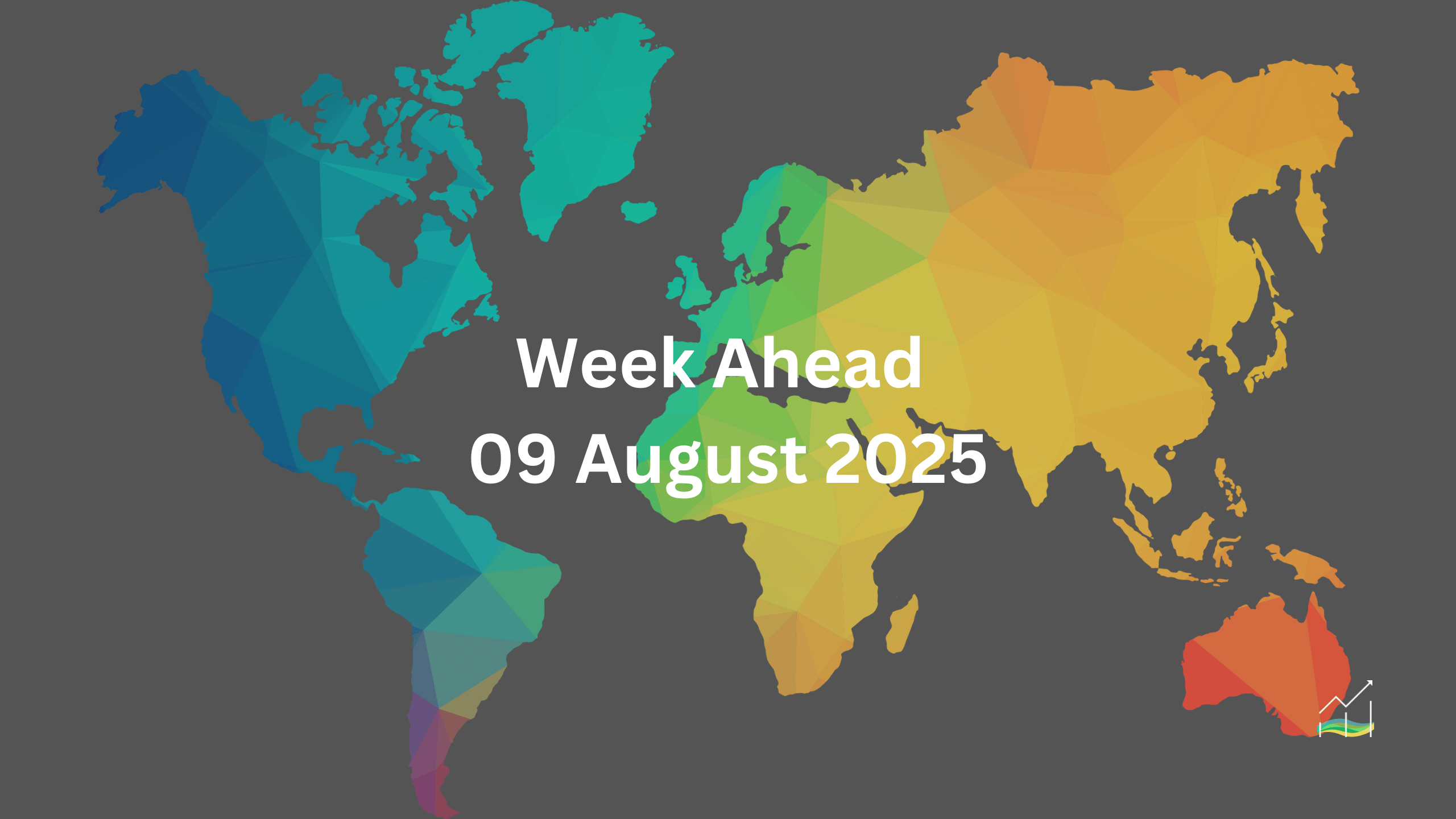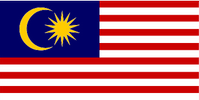09/08/2025 Week Ahead

U.S. Labor Market Weakness Shifts Fed Outlook
Key Takeaways:
- July’s US jobs data signaled a potential turning point for monetary policy.
- Two dovish FOMC governor dissents reflected concerns over labor market weakness.
- Markets are pricing in a strong likelihood of a September Fed rate cut, with at least two cuts expected by year-end.
- The US dollar’s July rally ended, with recent declines meeting key retracement levels.
- Rising CPI data could temporarily challenge the dollar before its downtrend resumes.
- The Reserve Bank of Australia is expected to deliver a third rate cut in its current easing cycle.
- The Reserve Bank of New Zealand is also expected to cut rates later in August.
The July US employment report appears to have marked a turning point in the monetary policy narrative. Two dovish Federal Reserve governors dissented from the decision to hold rates steady, citing weakness in the labor market rather than the economic resilience emphasized by the White House. Their stance was not an isolated view but a sign of broader concern, aligning with market expectations for a rate cut as early as next month, with at least two cuts anticipated before the end of the year. President Trump’s nomination of Stephen Morin to the Federal Reserve Board, to complete Kruger’s term, came against this backdrop of shifting sentiment.
The US dollar’s counter-trend rally in July has come to an end, with recent selling pressure pushing the currency to technical retracement levels of last month’s gains. Although US interest rates remain at the lower end of their recent range, a softer reception at last week’s Treasury refunding highlights potential vulnerabilities. Upcoming inflation data may prove pivotal, as both headline and core CPI are expected to show a third consecutive monthly increase on an annual basis. While this could offer temporary support to the dollar, the broader downtrend is likely to resume afterward.
In the Asia-Pacific region, attention will turn to the Reserve Bank of Australia, which is expected to deliver a quarter-point cut next week, marking the third reduction in its current easing cycle. Futures markets are also pricing in an additional cut in the fourth quarter, with a roughly 50 percent probability of yet another move before year-end. The Reserve Bank of New Zealand, meeting on August 20, is similarly expected to reduce rates by 25 basis points as both economies continue to face softer growth and inflation pressures.
United States of America
Overview
The US dollar’s July rally, previously supported by stronger economic data and a Federal Reserve in no rush to resume easing, reversed sharply following weaker jobs data, a soft ISM report, and rising expectations for interest rate cuts. The market now prices in a September rate cut and assigns roughly a one-in-three chance of three cuts this year, as reflected in Fed funds futures. This policy shift is likely to occur before Stephen Miran is confirmed to complete Governor Kugler’s term on the Federal Reserve Board.
Concerns over the dismissal of the Bureau of Labor Statistics commissioner have also surfaced, raising questions about the integrity of the data rather than just the impact of large statistical revisions. The broader economic picture shows signs of strain, particularly in manufacturing, which has suffered notable job losses and weak output growth over the past year.
Economic Drivers
- Weaker-than-expected July employment report and soft ISM data shifted market expectations toward a September Fed rate cut.
- Fed funds futures now price around a 33 percent chance of three rate cuts in 2025.
- Dismissal of the BLS commissioner has raised concerns about data credibility.
- Manufacturing sector under pressure, with 108,000 jobs lost in the past year and output growth stagnating.
- Fed policy expectations evolving ahead of Stephen Miran’s confirmation to the Board.
Data and Events
- 12 August 2025: CPI
- 14 August 2025: PPI
- 14 August 2025: Unemployment Claims
- 15 August 2025: Retail Sales
- 15 August 2025: Industrial Production
- 15 August 2025: Empire State Manufacturing Index
- 15 August 2025: Prelim UoM Consumer Sentiment
- 15 August 2025: Prelim UoM Inflation Expectations
Price Action
- Dollar Index approached 97.85, the 61.8 percent retracement of last month’s rally.
- Support trendline connecting July lows near 97.70 could be tested by the end of next week.
- Momentum indicators have turned negative, and the five-day moving average is set to cross below the 20-day moving average.
- CPI data may offer a temporary lift to the dollar, but the broader downtrend is likely to resume.
Key Points:
- Market increasingly confident of a September Fed rate cut, with more cuts possible by year-end.
- Manufacturing sector remains a drag on overall economic performance.
- CPI data will be closely watched for confirmation of rising inflation trends.
- Technical indicators point to continued dollar weakness after recent retracement.
Australia
Overview
The Australian dollar remains highly sensitive to the US dollar’s overall direction. Correlation measures show this relationship has reached its most extreme levels since mid-2024. The 30-day inverse correlation between changes in the Australian dollar and the US Dollar Index was near -0.80 at the start of August, easing slightly to 0.76, while the 60-day measure remains around -0.75. The currency’s movement also remains closely tied to other dollar bloc currencies, with a nearly 0.80 correlation to the Canadian dollar over the past 30 sessions.
The market is fully expecting the Reserve Bank of Australia to cut its cash rate target by 25 basis points to 3.60 percent at its meeting on August 12. This would mark the third cut in the current cycle. Futures pricing indicates another cut is fully expected in the fourth quarter, with about a 60 percent probability of an additional reduction before year-end. Labor market data due later in the week will provide further insight into the economy’s momentum, which has slowed notably compared to last year.
Economic Drivers
- Strong inverse correlation between the Australian dollar and the US Dollar Index, at its most extreme since mid-2024.
- Positive correlation between the Australian and Canadian dollars supports the dollar bloc narrative.
- RBA expected to cut rates to 3.60 percent on August 12.
- Additional monetary easing anticipated in the fourth quarter, with a significant chance of further cuts.
- Labor market has weakened, with job creation in the first half of 2025 less than half the pace of 2024, and unemployment rising to 4.3 percent in June.
Data and Events
- 12 August 2025: Cash Rate
- 12 August 2025: RBA Monetary Policy Statement
- 12 August 2025: RBA Rate Statement
- 12 August 2025: RBA Press Conference
- 13 August 2025: Wage Price Index
- 14 August 2025: Employment Change
- 14 August 2025: Unemployment Rate
Price Action
- Australian dollar rose from $0.6495 after US jobs data on August 1 to $0.6540 on August 7.
- Key resistance at $0.6545, the 61.8 percent retracement of the decline from the July 24 high of $0.6625.
- Support is near $0.6480.
- Momentum indicators are turning higher, suggesting potential for further gains and that the yearly high may not yet be set.
Key Points:
- RBA is set to cut rates to 3.60% this week.
- AUD remains highly sensitive to USD movements and part of a strong dollar bloc correlation.
- Labor market data shows slowing employment growth and rising unemployment.
- Technical indicators point toward potential for further AUD strength in the near term.
Canada
Overview
The Canadian dollar’s performance remains closely tied to the overall direction of the US dollar. Correlation measures show a strong positive relationship, with the 30-day reading near 0.75 and the 60-day reading at the highest since last July. This relationship has been consistent in recent years, where the Canadian dollar tends to lag during periods of US dollar weakness but perform better when the greenback is firm.
In the first half of 2025, as the US dollar broadly declined, the Canadian dollar posted a 5.5 percent gain, making it the weakest performer among the G10 currencies. However, in July, when the US dollar recorded its first monthly advance of President Trump’s second term, the Canadian dollar outperformed its peers despite losing 1.8 percent. This pattern reflects its sensitivity to US dollar momentum and interest rate expectations.
Economic Drivers
- Strong positive correlation with the US dollar, at its highest levels since mid-2024.
- Outperformance in strong US dollar environments and underperformance when the greenback is weak.
- Weaker-than-expected July jobs report with a loss of 51,000 jobs, the largest since March.
- Market pricing indicates a rising probability of a Bank of Canada rate cut, with odds for September increasing to nearly 45 percent from 25 percent at the start of August.
- A rate cut is fully priced in by year-end for the first time in a month.
Data and Events
- 12 August 2025: Building Permits
- 15 August 2025: Manufacturing Sales
- 15 August 2025: Wholesale Sales
Price Action
- US dollar fell sharply after peaking near CAD1.3880 on August 1 following weak US jobs data.
- Decline extended to around CAD1.3720 last week, matching the 50 percent retracement of the rally from the July 23 low near CAD1.3576 and aligning with the 20-day moving average.
- Despite significant full-time job losses, an inside day pattern formed ahead of the weekend.
- Momentum indicators have turned lower, with potential for USD gains toward CAD1.3800 before resuming a downtrend after the US CPI release.
Key Points:
- Canadian dollar remains highly correlated with US dollar trends.
- Weak labor market data has increased expectations for Bank of Canada rate cuts.
- No major domestic data releases this week, leaving currency direction dependent on US developments.
- Technical picture suggests limited short-term upside for USD/CAD before resuming a bearish bias.
China
Overview
Beijing appears comfortable with a slightly firmer yuan, although the change is modest compared with moves in most G10 currencies. The yuan strengthened relative to peers in July, with the dollar rising just over 0.5 percent against it, making it one of the strongest global currencies last month. Day-to-day variations in the daily dollar fix remain under observation, while implied volatility has eased. A broader weakening of the US dollar could test the People’s Bank of China’s willingness to maintain this stability.
Credit growth has been robust, with aggregate lending increasing by more than a quarter so far this year, largely driven by government borrowing. July is expected to show continued strength in lending activity. However, real sector performance remains mixed, with retail sales likely showing improvement while industrial production may soften. The property market remains under pressure despite various stabilisation efforts, with both new and used home prices staying weak and sales and investment continuing to contract.
Economic Drivers
- Yuan remains relatively strong compared to global peers, supported by a controlled policy approach.
- Implied volatility in the yuan has eased, indicating stable market expectations.
- Credit growth remains strong, boosted by government borrowing.
- Retail sales expected to improve, while industrial production likely slows.
- Property market remains a drag, with weak prices, contracting sales, and lower investment.
Data and Events
- 11 August 2025: New Loans
- 15 August 2025: Industrial Production
- 15 August 2025: Retail Sales
- 15 August 2025: Unemployment Rate
Price Action
- Yuan stability maintained by Beijing despite external pressures.
- Support zone formed near CNH7.1765–CNH7.1780 last week.
- Break below this level could see CNH7.15 as the next support.
- Resistance seen at CNH7.1950–CNH7.2000, with the pre–US jobs data high at CNH7.2240 as a higher barrier.
Key Points:
- Beijing tolerating a slightly firmer yuan, making it one of July’s strongest currencies globally.
- Credit growth remains robust, led by government borrowing.
- Property market continues to struggle despite policy support.
- Key data this week will show retail sales trends and industrial output performance
Europe
Overview
The euro found support after its early July decline as market expectations for US monetary policy shifted following weaker economic data. This shift narrowed the US two-year yield premium over Germany from a peak of around 208 basis points in early July to nearly 175 basis points after the US jobs report, the lowest since early April. The spread has since stabilised around the 180-basis-point level.
This week will bring a more detailed second estimate of Q2 GDP alongside aggregate June industrial production data. Weaker German industrial output and exports for June raise the risk of a small downward revision to growth. In addition, the August ZEW survey is due, which will provide further insight into sentiment. The current situation assessment has improved in six of the past seven months, yet at -59.5 in July it remains weak. Expectations, however, are much more optimistic, reaching 52.7 in July, the highest since February 2022.
Economic Drivers
- Narrowing of the US-Germany two-year yield premium from 208 basis points to around 175 basis points after the US jobs report.
- Stabilisation of the yield spread near 180 basis points in recent days.
- German industrial and export weakness could weigh on Q2 GDP revisions.
- ZEW survey shows improving expectations but persistently weak assessment of the current situation.
Data and Events
- 12 August 2025: ZEW Economic Sentiment
- 13 August 2025: German Final CPI
- 13 August 2025: German 10-y Bond Auction
- 14 August 2025: Flash Employment Change
- 14 August 2025: Flash GDP
- 14 August 2025: Industrial Production
Price Action
- Euro recovered 61.8 percent of its losses from the July 1 high, reaching almost $1.17.
- Key retracement target at $1.1660 achieved, with the August 1 high near $1.1600 providing additional support.
- June–July trendline resistance near $1.1750 at the end of the week.
- Momentum indicators turning higher, with the five-day moving average set to cross above the 20-day moving average.
- A break below last week’s low of $1.1525 would weaken the technical outlook.
Key Points:
- Euro supported by narrowing US-Germany yield spread after US data shift.
- Upcoming GDP and industrial production reports could impact sentiment.
- ZEW expectations at highest level since early 2022, despite weak current situation readings.
- Technical outlook remains positive unless $1.1525 support is broken.
Japan
Overview
The relationship between US interest rates and the yen remains strong, with the correlation between changes in the US 10-year yield and the dollar-yen exchange rate near 0.80 on a 30-day rolling basis, one of the highest levels in recent years. The 60-day correlation is around 0.55, up significantly from below 0.20 in early July. In contrast, the correlation between the exchange rate and Japan’s 10-year yield is minimal, less than 0.10 on a 30-day basis, and slightly inverted over the past 60 sessions, suggesting domestic yields have little influence on currency moves.
The key economic event this week will be the release of Japan’s Q2 GDP figures. After a 0.2 percent annualised contraction in Q1, the economy is expected to have grown by around 0.3 percent in Q2. Stronger government spending and better net exports are likely to offset weaker household consumption and slower business investment.
Economic Drivers
- Strong correlation between US 10-year yields and dollar-yen movements, currently near multi-year highs.
- Minimal correlation between Japanese yields and the yen exchange rate.
- Q2 GDP expected to return to modest growth following Q1 contraction.
- Growth likely supported by government spending and net exports, with household consumption and business investment acting as drags.
Data and Events
- 13 August 2025: PPI
- 13 August 2025: Prelim Machine Tool Orders
- 15 August 2025: Prelim GDP
- 15 August 2025: Revised Industrial Production
Price Action
- Dollar-yen traded in a narrow range last week between JPY146.60 and JPY148.10.
- Short-term bias for a stronger US dollar early in the week, particularly if US CPI confirms a third consecutive monthly increase.
- Resistance at JPY148.25 (38.2 percent retracement of drop from JPY150.90 before the August 1 US jobs report).
- Next resistance at JPY148.75 (50 percent retracement).
Key Points:
- Yen remains heavily influenced by US interest rate movements rather than domestic yields.
- Japan’s economy expected to post modest Q2 growth after Q1 contraction.
- Dollar-yen trading near key technical resistance levels.
- US CPI data could influence near-term direction in the pair.
United Kingdom
Overview
Following last week’s rate cut accompanied by cautious forward guidance, market expectations for another cut in the fourth quarter have eased. The probability of a cut has fallen from fully priced to around 70 percent. Sterling remains closely tied to broader US dollar movements, with a strong inverse correlation to changes in the Dollar Index, averaging around -0.70 over the past 30 sessions and -0.80 over the past 60 sessions. In mid-June, the 30-day reading reached an extreme of -0.90, the strongest since April 2024. Sterling also maintains a strong positive correlation with the euro, which is the largest component of the Dollar Index.
This week’s economic calendar features key domestic releases, including labour market data and the second-quarter GDP report. Monthly GDP contracted in April and May, highlighting economic headwinds. With two CPI reports, another labour market update, and July GDP still to come before the next Bank of England meeting on September 18, the threshold for back-to-back cuts remains high.
Economic Drivers
- Reduced probability of a Q4 rate cut following last week’s policy decision.
- Strong inverse correlation with the US Dollar Index and positive correlation with the euro.
- UK economic growth slowed in April and May, with contractions in monthly GDP.
- Upcoming data releases could influence the BOE’s September policy decision.
Data and Events
- 12 August 2025: Average Earnings Index
- 12 August 2025: Claimant Count Change
- 12 August 2025: Unemployment Rate
- 14 August 2025: GDP
- 14 August 2025: Goods Trade Balance
- 14 August 2025: Industrial Production
Price Action
- Sterling rebounded from $1.3140 before the US jobs report to near $1.3465.
- $1.3465 marks the 50 percent retracement of the decline from the July 1 high of $1.3790 and aligns with a key trendline.
- Initial support is between $1.3355 and $1.3375.
- Momentum indicators turning higher, with the five-day moving average set to cross above the 20-day moving average for the first time in a month.
Key Points:
- BOE rate cut expectations for Q4 have been reduced but remain significant.
- Sterling remains highly sensitive to US dollar movements.
- GDP and labour market data will be key to shaping BOE policy outlook.
- Technical indicators point to a constructive tone for sterling in the near term.
© 2025 SKONE Enterprise (003319453-V). All rights reserved.
The content on this site is for informational purposes only and does not constitute financial advice.


